2016 Child Mind Institute Children’s Mental Health Report- P3
This report provides an in-depth analysis of children's mental health needs and current resources available to address them.
- Emergency Management
- Connect360
- PBIS Rewards
- Hall Pass
- Preparation & Response Training
- Behavioral Case Manager
- Visitor Management
-
Compass
Getting Started Webinar Links Data & User Management Compass Curriculum for Students, Staff, & Families Compass Behavior Intervention Compass Mental Health + Prevention Compass for Florida - Character Ed, Resiliency, & Prevention Compass for Texas - Character Ed Analytics & Reporting Release Notes & Updates Additional Resources
- School Check In
- ALICE Training Institute
- Detect
- Anonymous Tip Reporting
- Resources
- Back-to-School
Mental health disorders are the most common health issues faced by our nation’s school-aged children. One in five children suffers from a mental health or learning disorder, and 80% of chronic mental disorders begin in childhood. There is an urgent need to identify the signs of these conditions early in life if children are to get the care and support they need to thrive.
Children struggling with mental health and learning disorders are at risk for poor outcomes in school and in life, and outdated approaches to discipline are only making matters worse. Instead of putting kids further at risk, schools should be identifying and supporting at-risk children. A widely deployed, integrated system of evidence-supported, school-based mental health and preventive services is needed. If we want to help our children and our schools, we cannot wait.
This report examines:
 Negative effects (suspension, dropout) of mental health disorders in school
Negative effects (suspension, dropout) of mental health disorders in school
 Early intervention and prevention programs
Early intervention and prevention programs
 School-wide behavior plans and targeted interventions
School-wide behavior plans and targeted interventions
Schools present an important opportunity for recognizing early signs of mental health problems in children. K-12 enrollment in the United States is around 55 million, providing our best chance to reach the 17.1 million young people who will be affected by mental health disorders before the age of 18. Working together, parents, educators and professionals can ensure that all children reap the benefits of education and receive the support they deserve.
Introduction
Just as success in school has profound effects in many parts of life, identifying and providing mental health interventions for children in school can have benefits far beyond the classroom. School communities give teachers and administrators important opportunities to share information and work with parents and families. With their concentrations of children and trained caregivers, schools are an ideal place to leverage evidence-based mental health knowledge and make a transformative impact on the mental health landscape of this country.
There is tremendous variability in how schools identify and manage mental health problems in children. Many schools don’t have adequate training or resources to recognize and appropriately help children adjust to emotional and behavioral problems. There are an alarming number of incidents in which children with behavioral issues are reprimanded, suspended or expelled from school. Disciplinary infractions in school often land children in trouble with the law because of zero-tolerance policies — the so-called school-to-prison pipeline that pulls troubled or needy students inexorably towards jail. At the same time, youth with anxiety disorders and depression go unrecognized. Dropout rates are as high as 40% among those enrolled in special education programs because of learning, attention or emotional problems.
Schools are by no means ignoring these issues. The results of the only nationally representative sample of adolescents in the United States revealed that schools can and do provide services for youth with attention and behavior problems that are more obvious to teachers and are more common in youth with learning problems. Federal mandates for evaluation and treatment of children with specific learning difficulties have also facilitated care for these children. In fact, young people with access to mental health services in school-based health centers are 10 times more likely to seek care for mental health or substance abuse than those who do not. But we do not yet have true parity between mental and physical health care, nor do robust mental health services in schools currently exist.
Today, optimal models of care pair school-wide behavior and discipline systems with services using community partners for targeted help. In this report, we provide examples of interventions and approaches that are working to help children with specific disorders and to improve the mental health of all children in the school environment. These programs can work for children today and spur innovation that will help more children tomorrow through the sensible integration of universal approaches with individualized, focused attention from professionals partnering with educators in the school environment.
N.B. Because this report does not generally cover clinical approaches to mental health care, interventions and outcomes are described using the common school-based language of symptoms and behaviors, not diagnoses.
Child Mental Health Disorders Are Common
The prevalence of mental health disorders among young people in this country approximates that of adults, and their impact may be even greater in youth because these disorders strike during critical periods of educational, emotional and social development.
17.1 million young people have or have had a diagnosable psychiatric disorder. Put another way, one out of every five children in the US meets criteria for a major mental disorder.
1 in 5 | ||||
 |
 |
 |
 |
 |
20% of US children have a mental health disorder | ||||
Fifty percent of mental health disorders begin before age 14 and 75% before age 24, affecting the learning and school experience for all children.
 50% of disorders begin before age 14
|
 75% of disorders begin before age 24 |
These are disorders of childhood and adolescence that, if untreated, will have a marked effect on students’ ability to learn and function in the school environment. For instance:
- 75% of social phobia manifests by age 15
- 75% of separation anxiety disorder manifests by age 10
- 75% of oppositional defiant disorder manifests by age 14
- 75% of ADHD manifests by age 8
Anxiety disorders such as social phobia can make students twice as likely to drop out or fail a grade; ADHD, mood and anxiety symptoms and disruptive behavior at age 6 predict math and reading achievement at age 17; and combinations of mental health disorders (including substance abuse) are predictors for low levels of lifetime educational attainment.
Mental Health Impacts in Schools
Children with mental health and learning disorders face frequent discipline and school failure, which can lead to problems later in life. These trajectories can be corrected, but only with recognition and intervention.
Emotional and behavioral problems can lead to office discipline referrals, school avoidance, suspension and being left back. Mental health and learning disorders can also lead students to drop out of school entirely. The consequences of these school-related discipline problems down the road are serious: underemployment and unemployment, prison, and reduced quality of life.
Problems start early.
- Expulsions in prekindergarten are almost twice as common — 89% higher — when classrooms don’t have regular access to a psychiatrist or psychologist. Only 23% of pre-K programs nationwide have on-site psychiatrists/psychologists or scheduled visits.
- Being at risk for mental health problems in first grade leads to a 5% drop in academic performance in just two years.
Students in special education are at high risk.
- More than 77,000 children in special education receive suspensions or expulsions for more than 10 cumulative days in a year—including children with autism, anxiety and learning disorders.
- Those suspended or expelled for more than 10 days include 5.7% of children with emotional disturbance and 2.6% of students with “other health impairments” (OHI), like ADHD.
- In one study of special education students, the suspension/expulsion rate for students with emotional disturbances was 64%.
Despite the stereotype that all special education takes place in separate or “special” classrooms, students served under the Individuals with Disabilities Education Act (IDEA) are very much a part of “mainstream” education because of inclusionary policies that “push in” instead of “pull out.” Ninety-five percent of students served under IDEA attend regular schools, and 61.1% of them spend more than 80% of their time in “mainstream” or general classrooms.
 95% of special education students attend regular schools |
 61.1% of them spend more than 80% of their time in mainstream classrooms |
Mental health and learning disorders are tied to higher dropout rates. The dropout rate for all students is 7%; for students served under IDEA it is 21.1%; for the subset of students served under IDEA with emotional disturbance, the dropout rate climbs to 38.7%.
 Total dropout rate |
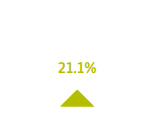 Dropout rate for special education students |
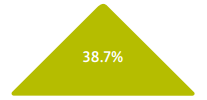 Dropout rate for special education students with emotional disturbance |
27,985 children aged 14–21 with autism, emotional disturbance or other health impairments including ADHD drop out each year. And 45,846 students with specific learning disorders drop out each year as well.
Dropout leads to prison. High-school dropouts are 63 times more likely to be jailed than four-year college graduates.
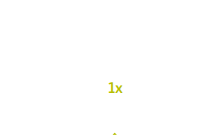 |
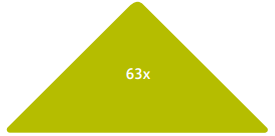 |
Compared to college graduates, high-school dropouts are 63 times more likely to be jailed | |
70.4% of youth involved in the juvenile justice system meet criteria for a psychiatric diagnosis,17 and 68% of state prison inmates have not completed high school.
 70.4% of youth involved in the juvenile justice system have a mental illness |
 68% of state prison inmates have not completed high school |
Dropout leads to poor quality of life.
- Persons without a high-school education live 9.2 fewer years than persons who graduate from high school.
Higher prevalence of ADHD and LD exacerbates discipline problems.
- States in regions with above-average rates of ADHD and LD (FL, District of Columbia) suspend children at twice the national average.
- States in regions with below-average rates of ADHD and LD (UT, WY, ID) suspend children at half the national average.
Suspension and Zero Tolerance
All children face rising rates of suspension, especially minority children; the ill effects of harsh discipline are not limited to children with a mental health diagnosis. But the “zero tolerance” focus on mandatory punishment for certain behaviors targets children with impulse or emotion regulation control problems often caused by mental health disorders.
The use of out-of-school suspension nearly doubled, from 1.7 million in 1974 to 3.1 million in 2001.
 Annual suspensions in US public schools, 1974
|
 Annual suspensions in US public schools, 2001
|
In the same period, enrollment in public elementary and secondary schools increased just 7.5%, from 44 million to 47.6 million.
One study found that 95% of out-of-school suspensions were for nonviolent, minor disruptions such as tardiness or disrespect.
A Texas study of one million students over the course of six school years found the following:
- 54% experienced at least one in-school suspension over the study period.
- 31% experienced an out-of-school suspension.
- 3% were state-mandated suspensions and expulsions.
- 97% of suspensions were discretionary, in response to conduct codes.
Compared to their typical peers, suspended students were two times as likely to repeat a grade, and three times more likely to be in contact with the juvenile justice system within a year.
 Students without suspensions |
 Suspended students are twice as likely to repeat a grade |
 Suspended students are three times more likely to be in contact with the law |
These trends are compounded for minority children, particularly those with mental health and learning disorders. More than 25% of boys of color served under IDEA receive an out-of-school suspension.
- Black children make up 18% of preschool enrollment, but represent 48% of preschool children who have received more than one out-of- school suspension.
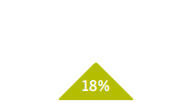
Preschool enrollment of black children as percentage of total
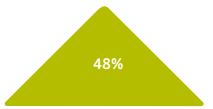
Preschool suspension rate of black children as percentage of total
- Although black students represent 16% of student enrollment, they represent 27% of students referred to law enforcement and 31% of students subjected to a school-related arrest.

School enrollment of black children as percentage of total

Law enforcement contact rate of black children as percentage of total

School-related arrest rate of black children as percentage of total
What Can We Do?
Given the prevalence of mental health issues in school, it makes sense to focus prevention and intervention efforts there. The emerging research on clinical mental health services in school is promising.
- Access to mental health services in school-based health centers leads to a tenfold increase in treatment for mental health or substance abuse.27
- Expulsions in prekindergarten are reduced by more than 47% when classrooms have regular access to a psychiatrist or psychologist.

Reduction in preschool expulsions with access to mental health professional
However, a dedicated mental health presence in school-based health centers has not yet become a reality on a national scale. A critical shortage of mental health professionals like child and adolescent psychiatrists and clinical child psychologists translates to a knowledge gap in schools concerning how to best manage and mitigate mental health disorders. There are approximately 8,300 practicing child psychiatrists in the United States; the estimated number needed to satisfy demand is 12,600.
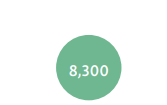 Number of child psychiatrists
|
 Estimated demand
|
Today, schools rely on referrals, community partnerships and universal prevention programs to address the demonstrated need and decrease risk for poor outcomes.
In the following section we look at promising interventions at various levels that help children to stay in school and improve mental health, both generally and in terms of specific disorders and symptoms. In their own way, each of the following examples of school-based interventions can address one of the persistent problems and poor outcomes described in the previous section. If educators, policymakers, parents and mental health professionals come together to advocate for sensible integration of these approaches, mental health promotion in school may provide a stunning return on investment.
Prevention and Early Intervention
Intervening early in school helps prevent behavioral issues from developing into problems that lead to suspension, expulsion and dropping out. Enlisting parents and teachers can make these interventions more effective—and prevention approaches can be effective at various developmental stages, as indicated below.
Infancy and Early Childhood
The Incredible Years is a widely disseminated program engaging teachers, parents and children to reduce disruptive behavior disorders, violence and delinquency. It has been used with general populations and adapted for children with early onset conduct problems and other risk factors, including socioeconomic status and other mental health disorders. The program is designed to train parents and teachers to help children from birth through school age.
Studies show robust positive effects of the intervention for decreasing disruptive behavior and increasing prosocial behavior. A meta-analysis of research studies reported a 15.5% improvement across domains of behavior for children whose families and school communities participated in the Incredible Years prevention program.
Childhood
Teacher-Child Interaction Training (TCIT) is a classroom intervention for children aged 3–7, based on an individualized treatment for disruptive behavior and family conflict called Parent-Child Interaction Therapy (PCIT).
One study showed that after teacher training and coaching, positive teacher behavior improved more than 100%, from 9% of interactions to 20% of interactions. Focused positive encouragement — “labeled praise” — increased fivefold.
 Positive teacher behavior without training
|
 Positive teacher behavior with TCIT
|
Another study showed significant improvement in ratings of resilience and behavioral control.
One assumption behind TCIT is that by improving the classroom environment, teachers will have more time and attention for teaching and encouraging each child, and young students will experience more of the benefits of focused early education and fewer of the distractions and ill effects of problematic behavior and disruption.
The Good Behavior Game (GBG) is a classroom-based behavioral management program shown to have long-lasting effects in preventing later poor outcomes. In a study, first and second graders in GBG classrooms were divided into teams that “compete” for rewards by adhering to teacher-defined rules for behavior. All teams can win by keeping the number of infractions down. The goal of the intervention is to encourage a positive learning environment and healthy social communication.
GBG is effective in reducing problem behaviors in the classroom, and it also has significant effects many years later. A follow-up study of children in GBG classrooms when they reached the age of 19–21 found significantly lower rates of drug and alcohol use disorders, regular smoking, antisocial personality disorder, delinquency and incarceration for violent crimes and suicide thoughts.
Young adult outcomes for children in the GBG group showed a 50% reduction in risk of drug abuse or dependence; a 35% risk reduction for alcohol abuse or dependence; a 59% decreased risk for regular smoking; and a 32% reduction in risk of developing antisocial personality disorder.
 Risk reduction for drug abuse or dependence |
 Risk reduction for alcohol abuse or dependence |
 Risk reduction for regular smoking |
 Risk reduction for developing antisocial personality disorder |
Middle Childhood and Early Adolescence
Daily Report Card (DRC) is another evidence-based behavior modification program developed for children with disruptive behavior disorders including ADHD. The DRC intervention works as a collaboration between school and home, and is constructed to address and reward progress related to problem behaviors identified in a child’s individualized education plan (IEP). Each DRC intervention is unique to the child and to the relationship between child, teacher and parents.
One study showed that children aged 6–12 with ADHD participating in the DRC intervention were:
- Twice as likely to be rated as unimpaired at the end of the study when compared to the control group.
Universal Programs and Screening
One of the most important components of early intervention for behavioral and emotional health concerns is early identification. School is the ideal place for this.
Chile has a widespread universal intervention plan for mental health in its schools, called Skills for Life. It begins in first grade with:
- Screening using instruments like the TOCA-R and a clinical scale called the Pediatric Symptom Checklist.
- Students identified at risk in first grade receive an intervention in second grade in the form of workshops administered by trained bachelor’s-level psychologists.
Skills for Life:
- Is in 20% of Chilean schools
- Has screened over 1 million students in 10 years
- Identifies as at-risk, and provides support to, 16.4% of first-grade students
Students who complete the intervention workshops, compared with those who did not, are less likely to remain at risk, less likely to be held back after third grade and less likely to have poor attendance.
 Reduction in “at risk” scores on the TOCA-R |
 Decrease in children held back after third grade |
 Decrease in poor attendance in third grade |
Why Screen?
Many mental health studies of schoolchildren rely on broader teacher reports of behavior and functioning. One of these scales, the Teacher Observation of Classroom Adaptation–Revised (TOCA-R), is used to assess interventions addressing:
- Aggressive and disruptive behaviors
- Concentration problems
- Prosocial behaviors
- Emotion regulation
Studies have shown that TOCA-R scores may predict later poor outcomes like school dropout, unemployment and mental health disorders, alerting professionals that early intervention may be warranted. It must be noted that large-scale screening often results in “false positive” assessments of risk; effective programs must follow screening with more sensitive appraisals of an individual child.
Social-Emotional Learning Approaches
In addition to prevention, screening and individual interventions, researchers are looking at the effects of entire curricula that reinforce good citizenship and behavior. Big-picture changes can be the ideal backdrop for individual improvement.
An emerging approach to encouraging positive mental health and behavior in young people is to adopt social and emotional learning (SEL) curricula in schools. A wide variety of models and interventions have been developed to explicitly teach these skills and decrease problems in emotional regulation and interpersonal interactions.
A meta-analysis of 213 studies including more than 270,000 students suggests that SEL programs and interventions have a broad positive effect. Students in SEL programs showed:
- 22% improvement in SEL skills
- 10% increase in “positive social behaviors”
- 10% decrease in “emotional distress”
- 11% improvement in academic performance
1 in 5 | ||||
 |
 |
 |
 |
 |
More than 20% improvement in social and emotional skills | ||||
The Promoting Alternative Thinking Strategies Curriculum (PATHS) is administered by Head Start teachers over the course of nine months. Like other SEL interventions, it is based on explicit instruction in SEL curricula. Teachers rate children who have completed PATHS as:
- more cooperative
- more emotionally aware
- more interpersonally skilled
The intervention shows:
- Significant increase in emotional vocabulary
- Reduction in false attribution of negative emotions
Like other universal interventions, it has not been shown to have a significant effect on more clinical symptoms like lack of inhibitory control or attention deficit.
Restorative Justice
To reduce the negative effects of disciplinary action, some programs work explicitly to bring down the number of suspensions and expulsions—and replace them with more constructive responses.
Restorative Discipline/Justice includes strategies to both prevent children from breaking the rules and intervene after an infraction has occurred. Some elements are focused on reducing the likelihood of student rule breaking (proactive circles where students and teachers talk about their feelings and expectations) and others on intervening afterwards (e.g., restorative conferences where the parties talk about what happened). In all cases the focus is on avoiding punishment for the sake of punishment.
In a district implementing restorative approaches over a period of six years, the suspension rate fell for students of all races and ethnicities. The reduction was 47% for all students; 41% for black students; 53% for Latino students; and 61% for white students.
 All students
|
 Black students
|
 Latino students
|
 White students
|
Multi-Tiered Systems of Support
We already have programs in many schools that integrate concepts of SEL and restorative justice. These programs are showing positive results; the next step is to integrate them more fully with individualized interventions.
Positive behavioral interventions and supports (PBIS) is a large-scale behavioral intervention in widespread use in schools in the United States. It is intended to effect systemic change in school discipline and behavioral outcomes through training, reporting and constant feedback.
PBIS is an example of a “multi-tiered system of supports” (MTSS) or “response to intervention” (RTI) model. All students and classrooms receive a “universal intervention” aimed at improving academic success, discipline and school functioning through a set of positive behavioral expectations.
At the second “tier,” students identified as “at risk” receive more targeted interventions with the expectation that with support they will move back to tier one.
At the third tier, students with significant academic, behavioral or emotional problems receive individualized and evidence-based interventions designed with the aid of individualized evaluation.
PBIS is intended to provide support in mainstream settings to reduce the need for special education. The universal, “tier one” application of PBIS is called “School-wide PBIS,” or SWPBIS, and is in place in approximately 17,000 US schools.

PBIS is established in 17,000 US schools, or 17%
A four-year randomized controlled trial looked at 12,334 children in 37 schools. Children in PBIS schools were 33% less likely to receive an office discipline report (ODR),44 and suspended 10% less often than children in comparison schools.

Reduction in office discipline reports (33%)
The universal school-wide intervention has small but significant positive effects on:
- Disruptive behaviors
- Concentration problems
- Emotion regulation
- Prosocial behavior
Targeted Interventions
Interventions that address specific concerns in specific populations of children are vital to mental health efforts in schools. Community partnerships have proven invaluable to many programs.
Aside from one-on-one mental health care from an office-based professional, clinicians have begun to develop school-based mental health interventions that leverage the environment to deliver care.
Below are two examples, one focused on aggression and the other on traumatic stress.
Second Step is an evidence-based prevention program for 4– to 14-year-olds that addresses impulsive and aggressive behavior, promotes anger management, and teaches problem-solving skills.
A study of 790 students showed that teacher and parent reports were not affected by the intervention—a common problem in school-based trials of behavioral approaches. But behavior observations by professional observers indicated significant decreases in physical aggression and increases in prosocial behavior.
Analysis of the program in 3,616 middle school students showed a 42% decrease in physical aggression and a 20% decrease of bullying in special education environments.
 Decrease in physical aggression with Second Step
|
 Decrease in bullying in special ed with Second Step
|
Cognitive Behavioral Intervention for Trauma in Schools (CBITS) is an evidence-based intervention for children with symptoms of post-traumatic stress disorder (PTSD). Children are identified by experienced school personnel and treated by a trained professional working with the school.
PTSD is a significant problem in young people, particularly in the poor urban environments CBITS was developed to serve.
- Lifetime PTSD in children 14–18: 5%
CBITS is a novel group intervention that lasts for 12 sessions (10 group and 2 individual) and can be delivered by school-based mental health personnel. A study of 126 students with PTSD and depression symptoms showed that, compared to no intervention, 86% reported less severe PTSD symptoms and 67% reported less severe depression symptoms.
 Reduction in PTSD symptoms
|
 Reduction in depression symptoms
|
Conclusions
Despite the best efforts of so many devoted educators, children who struggle with mental health and learning disorders still face an array of serious challenges and obstacles in school. Most schools today are ill equipped to evaluate and provide or refer for treatment, and we face major problems with the way we mete out discipline and promote the school-to-prison pipeline. Nevertheless, there is a silver lining for a nation that has a history of advocating for children who face barriers to learning and where there is a general consensus regarding the need to allocate more resources among the political and educational communities. The tools to improve the school environment for all children are being developed, and our task is to bring these promising, evidence-based approaches to more schools across the nation.
Mental health in school means many things — from social-emotional competency to an atmosphere of respect to supports for children with learning disorders, ADHD, PTSD and more. The landscape of “mental health in schools” is fractured, but these different areas of concern mirror all the things Americans want school to do for their children. In the words of Robert Balfanz, the education reformer and director of the Everybody Graduates Center, the ideal is “to be able to say to any child, in any part of the United States, ‘Your schools will educate you, challenge you, care for you, support you, and graduate you ready to succeed in the world.’”
Schools have already made the effort to accommodate and encourage children facing different hurdles to learning and success: physical handicaps, for instance. The education reform movement in the United States has made great strides in transforming curricula and other aspects of the educational system. Social, emotional and behavioral health is the necessary next step for building better schools to nurture healthy brains and happy children. Now it is time for schools to make a change for children struggling with mental health disorders.
Schools must continue to innovate and integrate approaches to school-based mental health — bringing the systemic focus of programs like PBIS into closer alignment with intensive individualized interventions while encouraging developmental awareness through early screening and progress monitoring. Schools must become the prime driver behind improving the mental health of America’s children. But to do this, evidence-based practices must be adopted at a large scale, and partnerships between educators and mental health professionals from the policy level on down to the individual child must be encouraged.
Imagine the differences our schools could make for children if they supported programs like these, and if they were equipped with the information they need to truly assess what is wrong and how to make it right. At last, we might have created a mental health safety net for all.
Sources
- Merikangas, K.R., He, J., Burstein, M., Swanson, S.A., Avenevoli, S., Cui, L., Benjet, C., Georgiades, K., Swendsen, J. (2010). Lifetime Prevalence of Mental Disorders in US Adolescents: Results from the National Comorbidity Study-Adolescent Supplement (NCS-A). Journal of the American Academy of Child and Adolescent Psychiatry. 49(10): 980-989. doi: 10.1016/j.jaac.2010.05.017
- U.S. Department of Education, National Center for Education Statistics. (2015). Digest of Education Statistics. Retrieved from: https://nces.ed.gov/fastfacts/display.asp?id=65
- Child Mind Institute. 2015 Children’s Mental Health Report. Retrieved from https://childmind.org/education/childrens-mental-health-report/
- Kaplan D.W., Calonge B.N., Guernsey B.P., Hanrahan M.B. (1998). Managed care and school-based health centers: Use of health services. Archives of Pediatrics and Adolescent Medicine. 152: 25–33.
- Child Mind Institute. 2015 Children’s Mental Health Report. Retrieved from https://childmind.org/education/childrens-mental-health-report/
- Kessler R.C., Berglund P., Demler O., Jin R., Merikangas K.R., Walters E.E. Lifetime Prevalence and Age-of-Onset Distributions of DSM-IV Disorders in the National Comorbidity Survey Replication. Arch Gen Psychiatry. 2005;62(6):593-602. doi:10.1001/archpsyc.62.6.593.
- Stein, M.B.; Kean, Y.M. (2000). Disability and quality of life in social phobia: epidemiologic findings. American Journal of Psychiatry. 157(10): 1606-1613. doi: 10.1176/appi.ajp.157.10.1606
- Breslau, J., Miller, E., Breslau, N., Bohnert, K., Lucia, V., & Schweitzer, J. (2009). The Impact of Early Behavior Disturbances on Academic Achievement in High School. Pediatrics, 123(6), 1472–1476. http://doi.org/10.1542/peds.2008-1406
- McLeod, J. D., Uemura, R., & Rohrman, S. (2012). Adolescent Mental Health, Behavior Problems, and Academic Achievement. Journal of Health and Social Behavior, 53(4), 482–497. http://doi.org/10.1177/0022146512462888
- Gilliam, W.S. (2005). Prekindergarteners Left Behind: Expulsion Rates in State Prekindergarten Systems. Yale University Child Study Center. Retrieved from: http://ziglercenter.yale.edu/publications/National%20Prek%20Study_expulsion_tcm350-34774_tcm350-284-32.pdf
- Murphy, J.M., Guzmán, J., McCarthy, A.E., Squicciarini, A.M., George, M., Canenguez, K.M., Dunn, E.C., Baer, L., Simonsohn, A., Smoller, J.W., Jellinek, M.S. (2014). Mental health predicts better academic outcomes: A longitudinal study of elementary school students in Chile. Child Psychiatry and Human Development. 46(2), 245–256. doi:10.1007/s10578-014-0464-4
- U.S. Department of Education (2014). 36th Annual Report to Congress on the Implementation of the Individuals with Disabilities Education Act. Retrieved from: http://www.ed.gov/about/reports/annual/osep
- Blackorby, J., Wagner, M., Levine, P., Newman, L., Marder, C., Cameto, R., Huang, T., and Sanford, C. (2004). Special Education Elementary Longitudinal Study (SEELS) Overview, Wave 1 and Wave 2. SRI International. Retrieved January 14, 2016, from: http://www.seels.net/designdocs/w1w2/SEELS_W1W2_complete_report.pdf
- National Center for Education Statistics. (2011). Retrieved from https://nces.ed.gov/fastfacts/display.asp?id=59
- National Center for Education Statistics. Digest of Education Statistics. Retrieved January 14, 2016, from: nces.ed.gov/programs/digest/d13/tables/dt13_219.90.asp
- Sum, A., Khatiwada, I., & McLaughlin, J. (2009). Joblessness and jailing for high school dropouts and the high cost for taxpayers. Center for Labor Market Studies, Northeastern University. Retrieved from: http://www.northeastern.edu/clms/wp-content/uploads/
The_Consequences_of_Dropping_Out_of_High_School.pdf. Sum et al’s estimate is based on an analysis of the US Census Bureau’s American Community Survey results from 2006 and 2007. - Shufelt, J. & Cocozza, J. (2006). Youth with mental health disorders in the juvenile justice system: Results from a multi-state prevalence survey. Prepared by: National Center for Mental Health and Juvenile Justice. Retrieved from: http://www.ncmhjj.com/youth-with-mental-health-disorders-in-the-juvenile-justice-system-results-from-a-multi-state-prevalence-study/
- Wong, M.D., Shapiro, M.F., Boscardin, W.J., Ettner, S.L. (2002). Contribution of major diseases to disparities in mortality. New England Journal of Medicine. 347:1585-1592. doi: 10.1056/NEJMsa012979
- Mitchell D. Wong, M.D., Ph.D., Martin F. Shapiro, M.D., Ph.D., W. John Boscardin, Ph.D., and Susan L. Ettner, Ph.D. N Engl J Med 2002; 347:1585-1592. doi: 10.1056/NEJMsa012979
- CDC Health Data Interactive. Retrieved from http://205.207.175.93/HDI/TableViewer/tableView.aspx
- US Department of Education Office for Civil Rights. Civil Rights Data Collection: Data Snapshot (School Discipline). (2014). Retrieved from http://www2.ed.gov/about/offices/list/ocr/docs/crdc-discipline-snapshot.pdf
- Wald and Losen.
- National Center for Education Statistics. (2011). Retrieved from https://nces.ed.gov/programs/digest/d13/tables/dt13_105.30.asp
- US Department of Education. (2014) Guiding Principles: A Resource Guide for Improving School Climate and Discipline. Retrieved from http://www2.ed.gov/policy/gen/guid/school-discipline/guiding-principles.pdf
- Council of State Governments Justice Center. (2011) Breaking School’s Rules. Retrieved from: https://csgjusticecenter.org/wp-content/uploads/2012/08/Breaking_Schools_Rules_Report_Final.pdf
- US Department of Education Office for Civil Rights. Civil Rights Data Collection: Data Snapshot (School Discipline). (2014). Retrieved from http://www2.ed.gov/about/offices/list/ocr/docs/crdc-discipline-snapshot.pdf
- Kaplan D.W., Calonge B.N., Guernsey B.P., Hanrahan M.B. (1998) Managed care and school-based health centers. Use of health services. Archives of Pediatrics and Adolescent Medicine. 152 :25– 33.
- Gilliam, W.S. (2005). Prekindergarteners Left Behind: Expulsion Rates in State Prekindergarten Systems. Yale University Child Study Center. Retrieved from: http://ziglercenter.yale.edu/publications/National%20Prek%20Study_expulsion_tcm350-34774_tcm350-284-32.pdf
- Association of American Medical Colleges (2014). 2014 Physician Specialty Data Book. Retrieved from: https://members.aamc.org/eweb/upload/14-086%20Specialty%20Databook%202014_711.pdf
- Substance Abuse and Mental Health Services Administration (2013). Report to Congress on the Nation’s Substance Abuse and Mental Health Workforce Issues. Retrieved from: https://store.samhsa.gov/shin/content/PEP13-RTC-BHWORK/PEP13-RTC-BHWORK.pdf
- Menting, A.T.A., de Castro, B.O., Matthys, W. (2013). Effectiveness of the Incredible Years parent training to modify disruptive and prosocial child behavior. Clinical Psychology Review. 33(8): 901-913. doi:10.1016/j.cpr.2013.07.006
- Lyon, A.R., Gershenson, R.A., Farahman, F.K., Thaxter, P.J., Behling, S., Budd, K.S. (2009). Effectiveness of Teacher-Child Interaction Training (TCIT) in preschool setting. Behavior Modification. 33(6): 855-884. doi: 10.1177/0145445509344215
- Budd, K.S., Garbacz, L.L., Carter, J.S. (2015). Collaborating with public school partners to implement Teacher-Child Interaction Training (TCIT) as universal prevention. School Mental Health. doi: 10.1007/s12310-015-9158-8
- Kellam, S. G., Mackenzie, A. C. L., Brown, C. H., Poduska, J. M., Wang, W., Petras, H., & Wilcox, H. C. (2011). The Good Behavior Game and the Future of Prevention and Treatment. Addiction Science & Clinical Practice, 6(1), 73–84
- Kellam, S. G., Brown, C. H., Poduska, J., Ialongo, N., Wang, W., Toyinbo, P., … Wilcox, H. C. (2008). Effects of a Universal Classroom Behavior Management Program in First and Second Grades on Young Adult Behavioral, Psychiatric, and Social Outcomes. Drug and Alcohol Dependence, 95(Suppl 1), S5–S28. doi: 10.1016/j.drugalcdep.2008.01.004
- Fabiano, G.A., Vujnovic, R.K., Pelham, W.E., Waschbusch, D.A., Massetti, G.M., Pariseau, M.E., Naylor, J., Yu, J,, Robins, M., Carnefix, T., Greiner, A.R., Volker, M. (2010). Enhancing the effectiveness of special education programming for children with attention-deficit hyperactivity disorder using a Daily Report Card. School Psychology Review. 39(2): 219-239.
- Guzmán, J., Kessler, R.C., Squicciarini, A.M., George, M., Baer, L., Canenguez, K.M., Abel, M.R., McCarthy, A., Jellinek, M.S., Murphy, J.M. (2015). Evidence for the effectiveness of a national school-based mental health program in Chile. Journal of the American Academy of Child and Adolescent Psychiatry, 54(10): 799-807. doi: 10.1016/j.jaac.2015.07.005.
- Bradshaw, C.P., Waasdorp, T.E., & Leaf, P.J. (2012). Effects of school-wide positive behavioral interventions and supports on child behavior problems. Pediatrics, 130(5). doi: 10.1542/peds.2012-0243
- Durlak, J. A., Weissberg, R. P., Dymnicki, A. B., Taylor, R. D. and Schellinger, K. B. (2011), The Impact of Enhancing Students’ Social and Emotional Learning: A Meta-Analysis of School-Based Universal Interventions. Child Development, 82: 405–432. doi: 10.1111/j.1467-8624.2010.01564.x
- Domitrovich, C., Cortes, R., Greenberg, M. (2007). Improving young children’s social and emotional competence: A randomized trial of the Preschool “PATHS” curriculum. Journal of Primary Prevention, 28(2).
- González, T. (2014). Socializing Schools: Addressing racial disparities in school discipline through restorative justice. In D. Losen (Ed.), Closing the school discipline gap. New York, NY: Teachers College Press.
- OSEP Technical Assistance Center. SWPBIS for Beginners. Retrieved January 20, 2016, from: http://www.pbis.org/school/ swpbis-for-beginners
- George, H.P. (2012). National PBIS landscape. Retrieved from: www.pbis.org/common/cms/files/pbisresources/6_National_Landscape.pdf
- Bradshaw, C.P., Waasdorp, T.E., & Leaf, P.J. (2012). Effects of school-wide positive behavioral interventions and supports on child behavior problems. Pediatrics, 130(5). doi: 10.1542/peds.2012-0243
- Bradshaw, C.P., Mitchell, M. M., & Leaf, P.J. (2010). Examining the Effects of Schoolwide Positive Behavioral Interventions and Supports on Student Outcomes: Results From a Randomized Controlled Effectiveness Trial in Elementary Schools. Journal of Positive Behavior Interventions 12: 133. doi: 10.1177/1098300709334798
- Grossman, D.C., Neckerman, H.J., Koepsell, T.D., Liu, P.Y., Asher, K.N., Beland, K., Frey, K., & Rivara, F.P. (1997). Effectiveness of a violence prevention curriculum among children in elementary school. A randomized controlled trial. JAMA. 277(20): 1605-11. doi:10.1001/jama.1997.03540440039030
- Espelage, D.L., Low, S., Polanin, J.R., Brown, E.C. (2013). Impact of a middle school program to reduce aggression, victimization, and sexual violence. Journal of Adolescent Health. 53(2): 180-186. doi: 10.1016/j.jadohealth.2013.02.021
- Espelage, D.L., Polanin, J.R., & Rose, C.A. (2015). Social-emotional learning program to reduce bullying, fighting, and victimization among middle school students with disabilities. Remedial and Special Education, doi: 10.1177/0741932514564564
- Merikangas, K., Hep, J., Burstein, M., Swanson, S., Avenevoli, S., Cui, L., Benejet, C…Swendsen, J. (2010). Lifetime prevalence of mental disorders in U.S. adolescents: results from the National Comorbidity Survey Replication—Adolescent Supplement (NCS-A). Journal of American Academy of Child and Adolescent Psychiatry. 49(10): 980-989. doi: 10.1016/j.jaac.2010.05.017
- Stein, B.D., Jaycox, L.H., Kataoka, S.H., Wong, M., Tu, W., Elliott, M.N., & Fink, A. (2003). A mental health intervention for schoolchildren exposed to violence: a randomized controlled trial. JAMA, 290(5): 603-11. doi: 10. 1001/jama.290.5.603